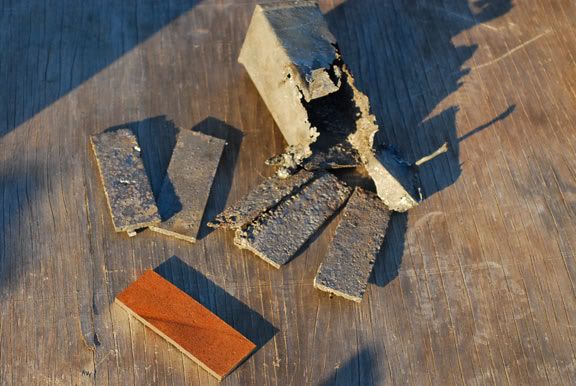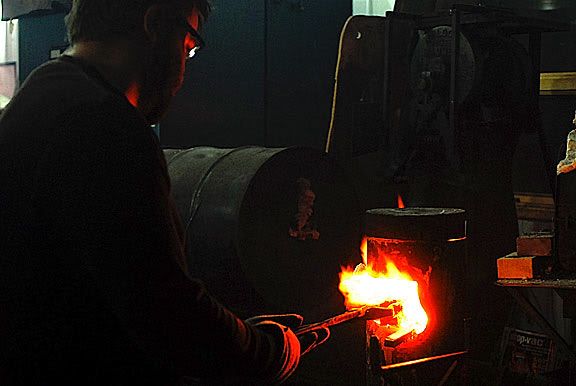I thought some of you may be interested in the process involved with making shear steel since it is the traditional material found in a lot the knives and tools used in early, pioneer America. Shear steel is a method of making high carbon tool steel from wrought iron (pure iron). It was the primary method of making steel in Western society from the Middle Ages up into the mid 19th Century.
I just attended a two day workshop in which I learned the process from Ric Furrer (
www.doorcountyforgeworks.com). If you have access to a good welding forge, just about anybody can do it. Although access to Ric's tools greatly facilitates the process!
The method basically consists of cutting wrought iron plate into manageable sizes.. in this case we had 6-7" long plates each about 1/4". You stack the plates in a square can made of mild steel with what is basically charcoal. You weld the can shut and then soak it in a forge at a good welding heat for... quite a long time... a couple of hours in our case. You place a 'test strip' of wrought iron into the can through a hole so that you spark test it after a while to see if it is carburized. This carburizing process basically gives you a very high carbon steel called blister steel. This blister steel is too high in carbon for tool making as well as being very high in silaceous slag so it has to be further refined. These plates are stacked, tack welded together to make a very thick billet 4-5" thick. Not something you want to manage by hand. This billet is then subjected to multiple forge weldings and pressing until you have about 1" thick rectangular billet. This is then cut up, stacked, tack welded and put through the same process. And then you do it one more time! These multiple foldings and stackings refine the steel, evenly distribute the carbon and promote nice patterning similar to what Karl is achieving with his san mai he just posted. These natural patterns in the steel are the reason why I'm interested in this.. beyond the idea of making historically correct swords and knives.
Once you've refined three times (as described above), you then forge it out into whatever you want. The final product is a very shallow hardening, beautifully patterned steel. I'm not yet sure what Rockwell is attainable... I will make a test knife and harden it before doing anything else.
So here are some pictures of the process:
Here is the can after doing the initial carburizing soak. There is a piece of wrought iron in the picture to show what it looked like before carburizing:

Here is a close-up of the blister steel that results from the first step:

I didn't get a picture of the pieces tack welded up for welding, but here they are soaking in the forge and getting pressed (the pictures are of the other guys in the class):



Continued:




















